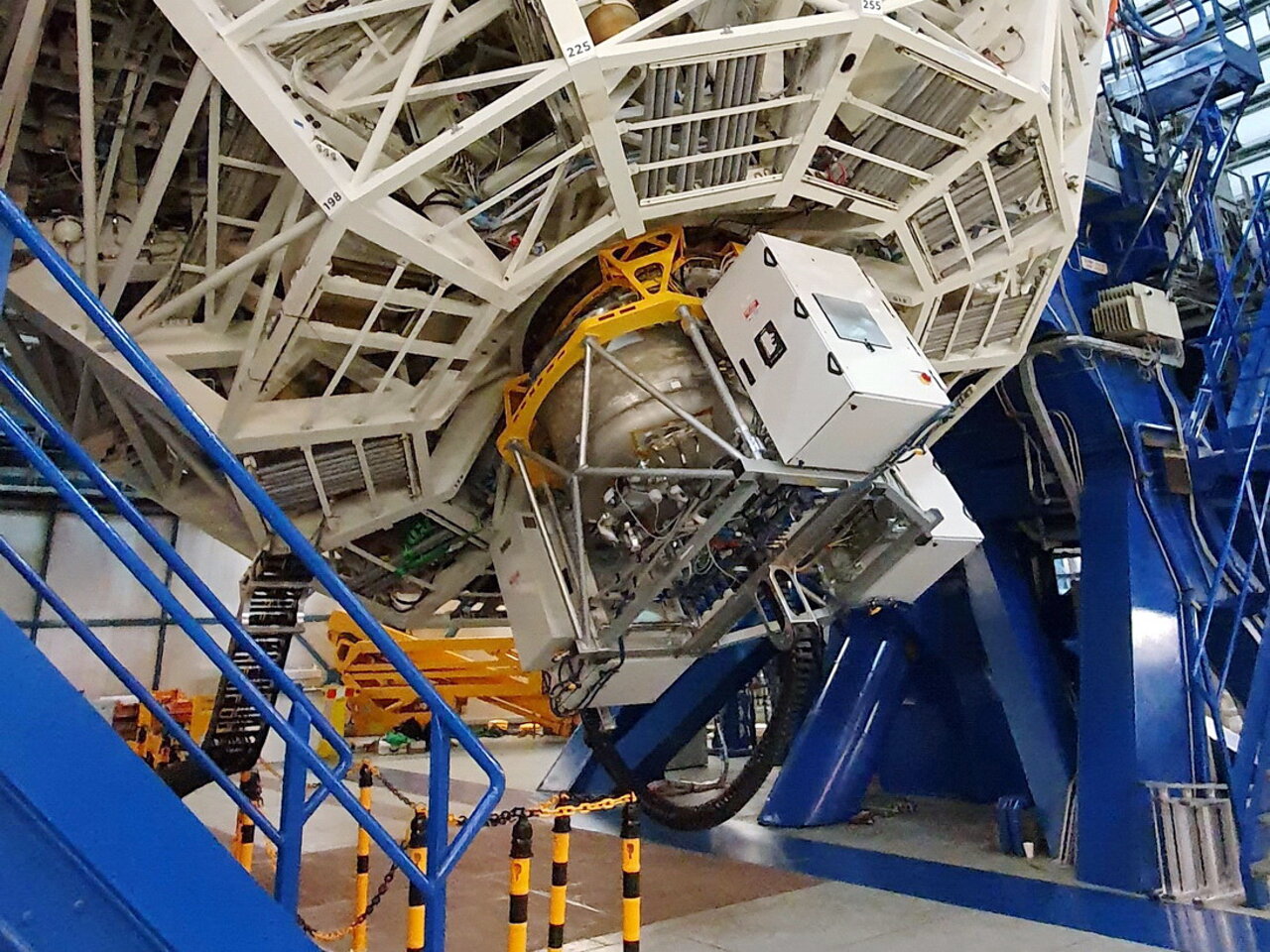ERIS
Enhanced Resolution Imager and Spectrograph
ERIS is part of a new generation of technology for ESO’s Very Large Telescope (VLT) located at the Paranal Observatory in Chile. The Enhanced Resolution Imager and Spectrograph (ERIS) instrument combines a general-use infrared imager and integral field spectrograph with the world-class adaptive optics installed on the VLT’s Unit Telescope 4 (Yepun).
The versatility of ERIS lends itself to many fields of astronomical research and it aims to take the sharpest images obtained to date using a single 8.2-metre class telescope once operational. ERIS is expected to greatly contribute to probing of distant galaxies, the Galactic Centre, our Solar System and exoplanets.
“Seeing more objects at a finer image resolution with better image quality is the goal with ERIS,” said Harald Kuntschner, ESO’s project scientist for the ERIS instrument. “There will be significant gains made with instrument, particularly with the adaptive optics, spectral resolution and the near-infrared coverage.”
The new, more sensitive technology of ERIS will succeed the successful NACO and SINFONI instruments, which have been used on the VLT since the early 2000s. ERIS is planned to work for 10 years following first light.
ERIS-SPIFFER, Spectrograph
The spectrograph of ERIS, named ERIS-SPIFFIER, is a refurbished version of SINFONI’s SPIFFI (SPectrometer for Infrared Faint Field Imaging) instrument. The ERIS-SPIFFIER, as an integral field spectrograph, works in much the same way as SPIFFI. Each pixel of the spectrograph is capable of collecting a full spectrum, which is the intensity of each wavelength measured by the instrument. The data collected is multidimensional and contains a lot of information for astronomers to analyse. This type of spectrograph allows astronomers to determine the relative position in space of each part of the target object. Combined with the infrared observing wavelength, this type of spectroscopy can for example allow astronomers to study the spin, structure, and content of high-redshift galaxies. A higher resolution grating on the spectrograph, used to split incoming light to capture a spectrum, works similarly to how a prism splits light into different colours.
“These spatial resolutions haven’t happened before with an integral field spectrograph,” said Kuntschner. “We’re planning to get spatial resolutions at the limit of what an 8-metre class telescope can do with this technique.”
ERIS-NIX, Infrared Imager
The imager on ERIS is the Near Infrared Camera System (NIX), the next generation of infrared imager for the VLT. Astronomers are able to use two main modes for the imager. One mode is direct imaging of astronomical objects. Another mode is coronagraphy, an observing technique that works by suppressing the direct light of a star. This technique on ERIS-NIX allows astronomers to observe exoplanets and discs of gas and dust around young stars.
ERIS-NIX is capable of collecting data in near-infrared between 3000 and 5000 nanometers, which are particularly difficult wavelengths to observe from the ground due to excess light interference from the sky. As such, ERIS is one of the few ground-based instruments with this wavelength coverage on an 8-metre class telescope and observing at these wavelengths allows for a new and unique view of exoplanets and galaxies.
ERIS and the Adaptive Optics Facility
ERIS is also equipped with an adaptive optics module that works together with the Adaptive Optics Facility (AOF) installed in 2017 on Yepun. Adaptive optics make real-time corrections for atmospheric turbulence that distorts starlight to allow for much sharper image quality, and are an important part of modern ground-based astronomical observations. The AOF capabilities in conjunction with the module allows ERIS to capture the sharpest data possible with the instrument and cover more of the sky than earlier VLT instruments.
ERISThe authoritative technical specifications as offered for astronomical observations are available from the Science Operations page.
|
